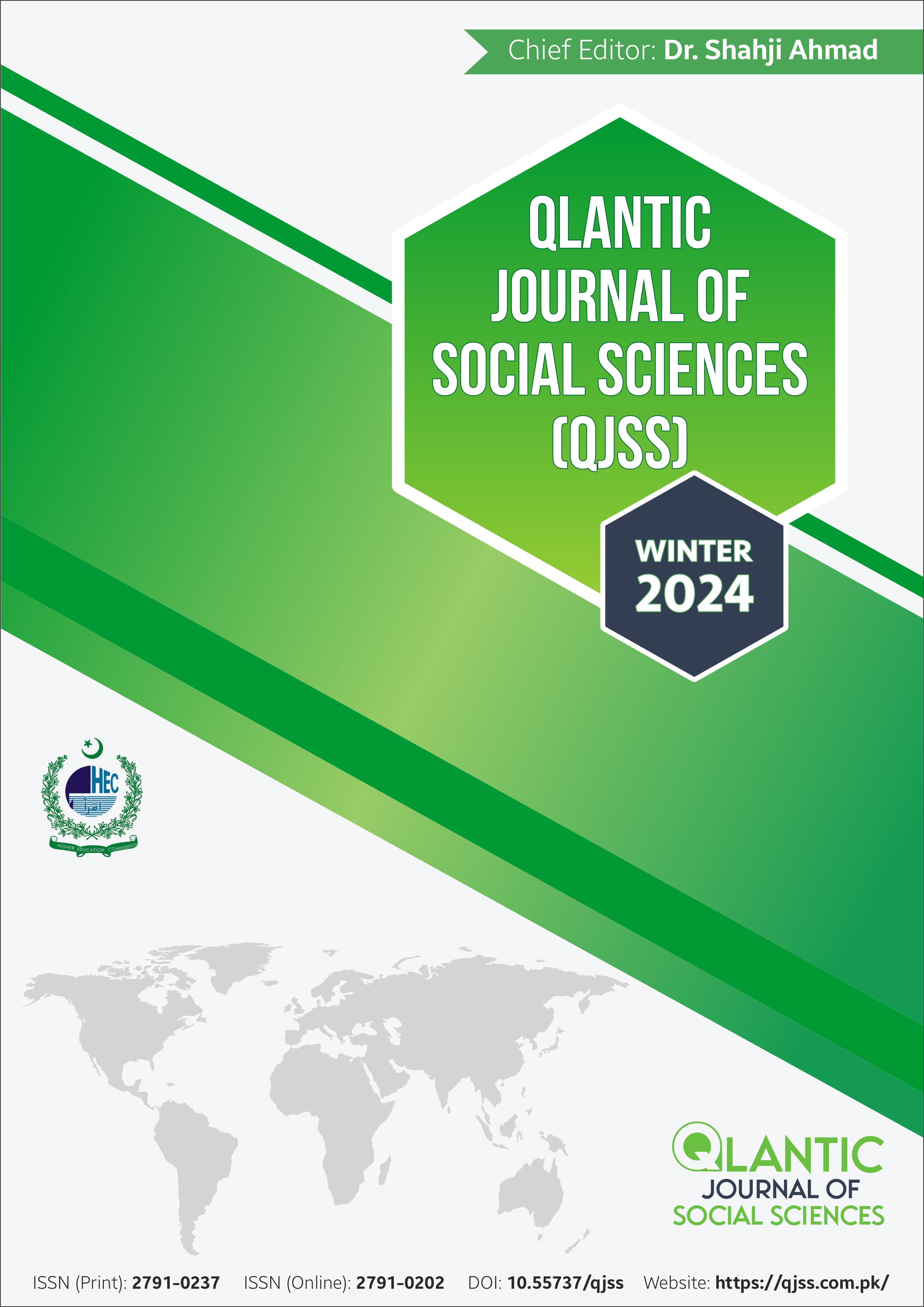Organizational Commitment: A Comparative Study of Public and Private Higher Education Institutions in Punjab
DOI:
https://doi.org/10.55737/qjss.687456327Abstract
This study examined and compared levels of organizational commitment (OC) between public and private university teachers in Punjab province, Pakistan. Understanding distinctions in factors influencing teacher retention and engagement across institutional contexts holds value. Yet this topic remains under-researched, especially locally. Multistage stratified sampling selected comparable public and private Punjab-based universities and faculty profiles. A sample of 315 public and private sector university faculty completed an adapted (OC) scale. Independent t-tests and descriptive analyses were utilized to assess differences across affective, normative, and continuance commitment means. Analyses revealed moderately higher overall OC among public university teachers, particularly driven by heightened continuance commitment tied to perceiving greater barriers and difficulties exiting their jobs. Affective and normative commitment promoting emotional connections and a sense of obligation also differed slightly. Tailored OC interventions should account for public teachers' "trapped" mindsets due to limited career alternatives; private faculty warrant strengthening of socioemotional rewards and mentoring. Developing context-appropriate retention strategies necessitates addressing differential needs across university types. Implementing targeted professional growth, culture building, career pathing services, and HR policies catering to distinct public and private settings can enhance teacher commitment. Further qualitative inquiries to deeply explore influencing factors are also advised.
References
Andrews, R., Hansen, J. R., & Huxley, K. (2019). Senior public managers’ organizational commitment: Do private sector experience and tenure make a difference? International Public Management Journal, 24(6), 911-942. https://doi.org/10.1080/10967494.2019.1580231
Arciénaga Morales, A., Nielsen, J., Bacarini, H., Martinelli, S., Kofuji, S., & García Díaz, J. (2018). Technology and innovation management in higher education—Cases from Latin America and Europe. Administrative Sciences, 8(2), 11-25. https://doi.org/10.3390/admsci8020011
Asrar-ul-Haq, M., Kuchinke, K. P., & Iqbal, A. (2017a). The relationship between corporate social responsibility, job satisfaction, and organizational commitment: Case of Pakistani higher education. Journal of Cleaner Production, 142, 2352-2363. https://doi.org/10.1016/j.jclepro.2016.11.040
Barnard, C. (1938). The functions of the executive (Vol. 11). Harvard University Press.
Barnard, C. I. (1968). The functions of the executive: Thirtieth-anniversary edition. Harvard University Press.
Becker, G. S. (2010). The economics of discrimination. University of Chicago Press.
Buluc, B., & Gunes, M. (2014). Relationship between organizational justice and organizational commitment in primary schools. The Anthropologist, 18(1), 145-152. https://doi.org/10.1080/09720073.2014.11891530
Choe, K. L., Choong, Y. O., & Tan, L. P. (2017). The impact of ethical climate on organizational commitment: A study of Malaysian higher learning institutions. Global Business and Management Research, 9(1), 208-229. https://www.researchgate.net/profile/Yuen-Onn-Choong/publication/319998318_The_Impact_of_Ethical_Climate_on_Organizational_Commitment_A_Study_of_Malaysian_Higher_Learning_Institutions/links/59c63350a6fdccc7191ea08d/The-Impact-of-Ethical-Climate-on-Organizational-Commitment-A-Study-of-Malaysian-Higher-Learning-Institutions.pdf
Gaytan, J. A., & McEwen, B. C. (2010). Instructional technology professional development evaluation: Developing a high-quality model. Delta Pi Epsilon Journal, 52(2), 77-94. https://openurl.ebsco.com/EPDB%3Agcd%3A12%3A13508812/detailv2?sid=ebsco%3Aplink%3Ascholar&id=ebsco%3Agcd%3A54339957&crl=c
Jin, M. H., McDonald, B., & Park, J. (2016). Does public service motivation matter in public higher education? Testing the theories ofperson–organization fit and organizational commitment through a serial multiple mediation model. The American Review of Public Administration, 48(1), 82-97. https://doi.org/10.1177/0275074016652243
Jung, D. I., Chow, C., & Wu, A. (2003). The role of transformational leadership in enhancing organizational innovation: Hypotheses and some preliminary findings. The Leadership Quarterly, 14(4-5), 525-544. https://doi.org/10.1016/s1048-9843(03)00050-x
Kanter, R. M. (2017). Power failure in management circuits. Leadership Perspectives, 281-290. https://doi.org/10.4324/9781315250601-21
Karaca, A. (2017). The Relationship Between Organizational Justice and Organizational Commitment. Journal of Multidisciplinary Developments, 2(2), 82-91.
Lovakov, A. (2016). Antecedents of organizational commitment among faculty: An exploratory study. Tertiary Education and Management, 22(2), 149-170. https://doi.org/10.1080/13583883.2016.1177583
Meyer, J. P., & Allen, N. J. (1991). A three-component conceptualization of organizational commitment. Human Resource Management Review, 1(1), 61-89. https://doi.org/10.1016/1053-4822(91)90011-z
Meyer, J. P., Allen, N. J., & Smith, C. A. (1993). Commitment to organizations and occupations: Extension and test of a three-component conceptualization. Journal of Applied Psychology, 78(4), 538-551. https://doi.org/10.1037//0021-9010.78.4.538
Mohammad, N., Sajid, S. M., & Jamil, M. (2022). Teachers' empowerment and organisational commitment: A perceived perspective of secondary school teachers in Punjab. Global Regional Review, VII(II), 127-135. https://doi.org/10.31703/grr.2022(VII-II).12
Puusa, A., Tuominen, T., Tuominen, P., & Havukainen, M. (2017). The interrelations between member-commitment, trust, satisfaction and loyalty in a cooperative context. ECMLG17. Proceedings of the 13th European conference on management leadership and governance.
Sajid, S.M., Jamil, M., Muhammad, N. (2022). Exploring Organizational Environment of Public Universities of Punjab. Global Educational Studies Review, VII(II), 456-466. https://doi.org/10.31703/gesr.2022(VII-II).43
Sajid, S. M., Jamil, M., & Abbas, M. (2022). Relationship between organizational environment and teachers' citizenship behaviour at public universities of Punjab. Global Educational Studies Review, VII(II), 192-200. https://doi.org/10.31703/gesr.2022(VII-II).18
Saridakis, G., Lai, Y., Muñoz Torres, R. I., & Gourlay, S. (2018). Exploring the relationship between job satisfaction and organizational commitment: an instrumental variable approach. The International Journal of Human Resource Management, 2(3), 1-31. https://doi.org/10.1080/09585192.2017.1423100
Shiu, E., Jiang, Z., & Zaefarian, G. (2014). Antecedents of behavioural commitment in inter-organizational relationships: a field study of the UK construction industry. Construction Management and Economics, 32(9), 888-903. https://doi.org/10.1080/01446193.2014.915335
Simon, H. A. (1945). Administrative Behavior: A Study of Decision-Making Processes in Administrative Organization.
Steers, R. M. (1977). Antecedents and outcomes of organizational commitment. Administrative Science Quarterly, 22(1), 46-56. https://doi.org/10.2307/2391745
Valaei, N., & Rezaei, S. (2016). Job satisfaction and organizational commitment. Management Research Review, 39(12), 1663-1694. https://doi.org/10.1108/mrr-09-2015-0216
Wilkes, M. (2017). A situational analysis of Chinese managers’ personal value systems (PVS) and their influence on employee commitment. Heriot-Watt University.




